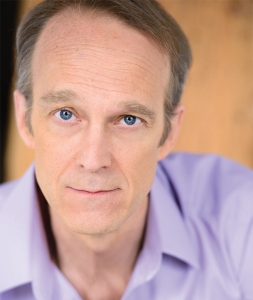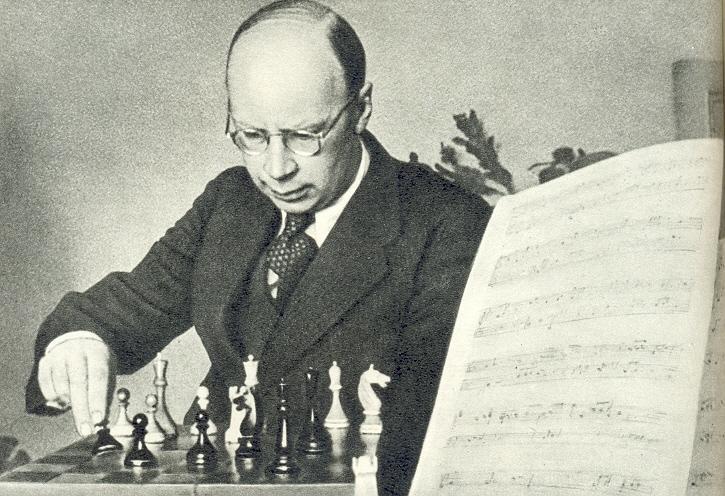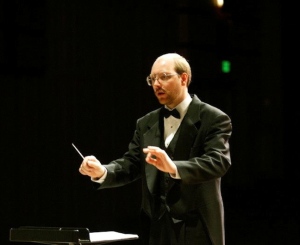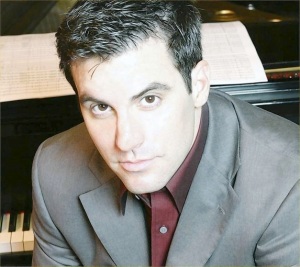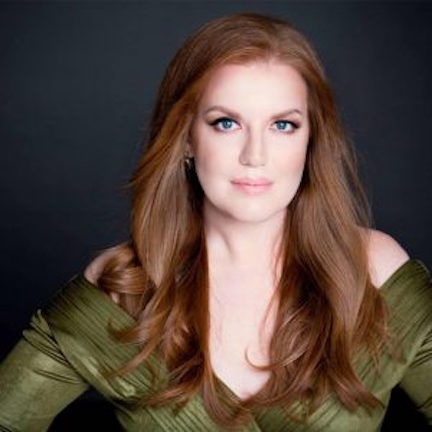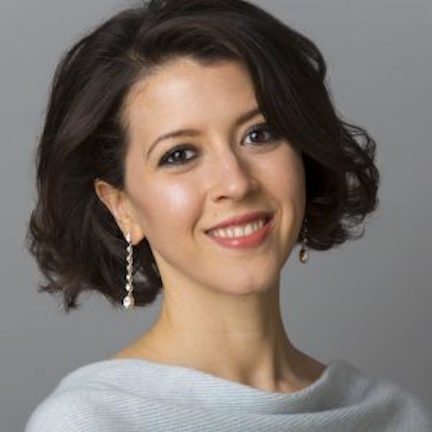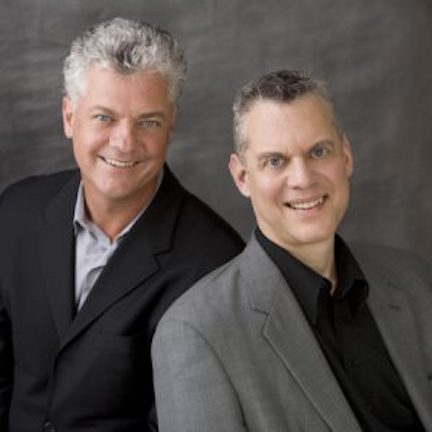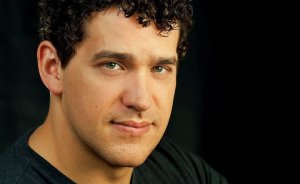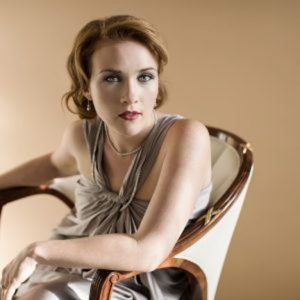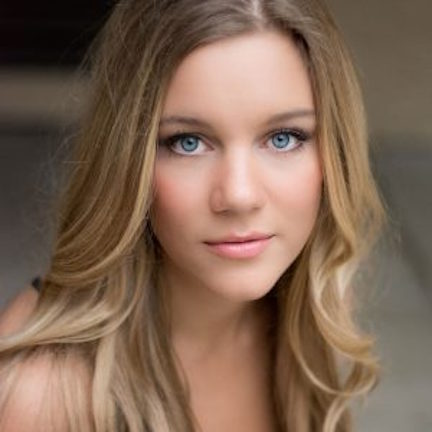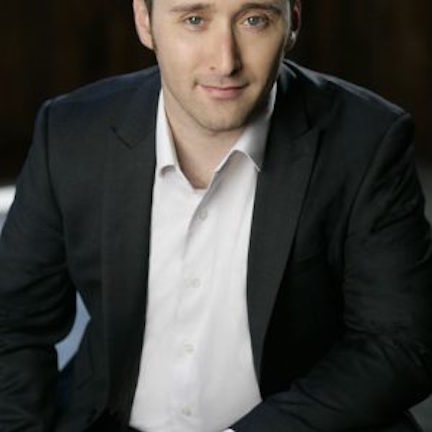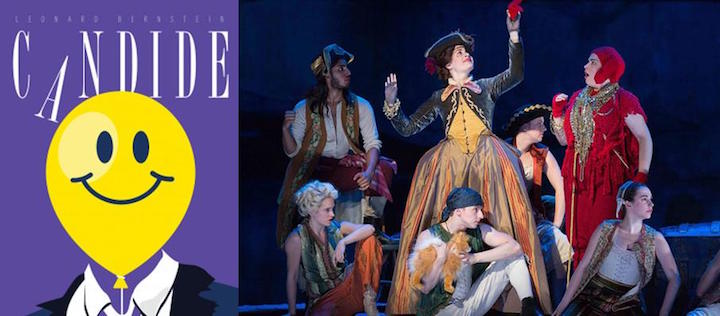The Well-Tempered Ear
University Opera’s original online video project celebrates the life and music of American composer Marc Blitzstein. It will be posted for FREE on YouTube this Friday night, Oct. 23, at 8 p.m.
2 Comments
PLEASE HELP THE EAR. IF YOU LIKE A CERTAIN BLOG POST, SPREAD THE WORD. FORWARD A LINK TO IT OR, SHARE IT or TAG IT (not just “Like” it) ON FACEBOOK. Performers can use the extra exposure to draw potential audience members to an event. And you might even attract new readers and subscribers to the blog.
By Jacob Stockinger
This fall, University Opera presents its first project of 2020-21 in video format as it turns to the music of the American composer Marc Blitzstein (1905-1964).
“I Wish It So: Marc Blitzstein – the Man in His Music” will be released free of charge on the University of Wisconsin-Madison Mead Witter School of Music’s YouTube channel this Friday night, Oct. 23, at 8 p.m. CDT at the general site www.youtube.com/meadwitterschoolofmusic or the official specific link: https://youtu.be/77FXFZucrWc.
Director of University Opera David Ronis (below top) is the director of the original production and will give introductory remarks. UW-Madison graduate Thomas Kasdorf (below bottom) is the musical director. The production lasts 1 hour and 40 minutes, and features four singer-actors, a narrator and a piano.
Marc Blitzstein’s life story parallels some of the most important cultural currents in American history of the mid-20th-century.
Known for his musicals — most notably The Cradle Will Rock in 1937 (you can hear Dawn Upshaw sing the lovely song “I Wish It So” from “Juno” in the YouTube video at the bottom) — his opera Regina and his translation of Kurt Weill’s The Threepenny Opera, Blitzstein was an outspoken proponent of socially engaged art. Like many artists of his time, he joined the American Communist Party. But he also enthusiastically served in the U.S. Army during World War II (below, in 1943).
Nevertheless, in 1958, long after he had given up his Communist Party membership, Blitzstein (below) was called before the House Un-American Activities Committee (HUAC) where he “named no names.”
An extremely gifted yet underappreciated composer, he was a close friend of and mentor to Leonard Bernstein (below right, with Blitzstein on the left) and traveled in a close circle of American composers including David Diamond and Aaron Copland.
Although openly gay, he married Eva Goldbeck in 1933. Sadly, she died three years later from complications due to anorexia.
Blitzstein’s own death was likewise tragic. In 1964, while in Martinique working on an opera about the anarchists Sacco and Vanzetti, a commission from the Metropolitan Opera, he was robbed and badly beaten by three Portuguese sailors whom he had picked up at a bar. He died the next day of internal injuries.
Although throughout his life and afterwards, Blitzstein’s work was championed by Bernstein and others, many claim that neither the composer nor his stunning music and beautiful lyrics ever received the attention they deserved. So University Opera is proud to present this show celebrating his life and his works.
“I Wish It So: Marc Blitzstein – the Man in His Music” is a unique production put together by David Ronis. A biographical pastiche, it tells the story of Blitzstein’s life by recontextualizing 23 songs and ensembles from his shows, juxtaposing them with spoken excerpts from his working notes and letters, and tying it all together with a narration.
The result is a dramatic, evocative and enjoyable portrait of Blitzstein’s life and his art, according to Ronis.
“We’ve discovered a lot of “silver linings” while working on this production,” says Ronis. “We were disappointed at not being able to do a normal staged show. But working with video has had tremendous artistic and educational value.
“Our students are learning on-camera technique, not to mention how to work with a green screen (below, with soprano Sarah Brailey), which allows for post-production editing and digital manipulation of backgrounds. They’re also working with spoken text as well as sung pieces. Mostly, we’re just very grateful to have a creative project to sink our teeth into during the pandemic.
“And the music of Blitzstein is so fantastic, we’re very happy to be able to share it with our audience. This project is like none other I’ve ever done and we’re thinking that it’s going to be pretty cool.”
Research on the project was completed at the Wisconsin Historical Society, where Blitzstein’s archives are housed. University Opera gratefully acknowledges the help of both Mary Huelsbeck of the Wisconsin Center for Film and Television Research, and the Kurt Weill Foundation for their assistance with this project.
The cast features five UW-Madison graduate students: Sarah Brailey, Kenneth Hoversten, Justin Kroll, Lindsey Meekhof (below) and Steffen Silvis.
The video design was done by Dave Alcorn with costumes by Hyewon Park.
Others on the production staff include Will Preston, rehearsal pianist; Elisheva Pront, research assistant and assistant director; Dylan Thoren, production stage manager; Alec Hansen, assistant stage manager; Teresa Sarkela, storyboard creator; and Greg Silver, technical director.
The video will be accessible for 23 hours starting at 8 p.m. this Friday, Oct. 23. Although there will be no admission price for access, donations will be gratefully accepted. A link for donations will be posted with the video.
University Opera, a cultural service of the Mead Witter School of Music at the University of Wisconsin-Madison, provides comprehensive operatic training and performance opportunities for students and operatic programming to the community. For more information, email opera@music.wisc.edu or visit music.wisc.edu.
Tags: #20thCentury, #AaronCopland, #AmericanCommunistParty, #AmericanComposer, #Americanhistory, #ArcticCircle, #BlogPost, #BlogPosting, #BroadwayMusical, #BroadwayShows, #CentralDaylightSavingTime, #CentralDaylightTime, #CityofMadison, #CommissionedMusic, #CommunistParty, #CoronavirusPandemic, #COVID-19, #DaveAlcorn, #DavidDiamond, #DavidRonis, #DawnUpshaw, #DigitalMedia, #EngagedArt, #EnglishTranslation, #EvaGoldbeck, #FacebookPost, #FacebookPosting, #Fridaynight, #GiveUp, #GreenScreen, #HouseUn-AmericanActivities Committee, #HouseUnAmericanActivitiesCommittee, #InternalInjuries, #IWIshItSo", #JacobStockinger, #KurtWeill, #KurtWeillFoundation, #LeonardBernstein, #LGBTRights, #LifeStory, #MadisonWisconsin, #MarcBlitzstein, #MeadWitterSchoolofMusic, #MetropolitanOpera, #MusicalDirector, #MusicEducation, #NewYorkCity, #OnlineConcert, #OperaMusic, #OriginalWork, #PianoAccompaniment, #PianoAccompanist, #PickUp, #RedScare, #SaccoandVanzetti, #SarahBrailey, #SilverLining, #SociallyEngaged, #SpokenWord, #StageManager, #TechnicalDirector, #The CradleWillRock, #TheEar, #TheThreepennyOpera, #TheUW, #ThomasKasdorf, #UniversityofWisconsin-Madison, #UniversityOpera, #USArmy, #VirtualConcert, #VocalMusic, #WisconsinCenterforFilmandTelevisionResearch, #WisconsinHistoricalSociety, #WorkingNotes, #WorldWarII, #YouTubeChannel, #YouTubevideo, 20th-century, Aaron Copland, accept, acknowledge, Actor, admission, American, American Community Party, American composer, American history, anarchism, anarchist, anorexia, Army, Art, artistic, artists, Arts, assistance, attention, audience, background, bar, Bashar al-Assad, Beat, beaten, beautiful, biographical, blog, camera, CDT, celebrate, Central Daylight Saving Time, Central Daylight Time, champion, circle, Classical music, close, commission, Communist, Communist Party, community, complications, composer, comprehensive, Concert, Congress, cool, coronavirus, costumes, creative, creative process, cultural, currents, Dave Alcorn, David Diamond, David Ronis, Dawn Upshaw, death, deserve, design, died, digital, director, disappointed, donation, donations, done, dramatic, editing, educational, engaged art, English, English translation, enjoyable, ensemble, enthusiastic, Eva Goldbeck, evocative, excerpts, fabtastic, Facebook, fantastic, format, forward, foundation, free, Friday, friend, gay, gift, gifted, give up, graduate, graduate student, grateful, green screen, happy share, happy', History, House Un-American Activities Committee, House UnAmerican Activities Committee, HUAC, I Wish it So, important, information, injuries, internal, internal injuries, Jacob Stockinger, join, Joseph McCarthy, Juno, juxtapose, Kurt Weill, Kurt Weill Foundation, learning, Leonard Bernstein, letters, LGBT, life, life story, like, link, lyrics, Madison, man, Marc Blitzstein, marry, Martinique, McCarthyism, Mead Witter School of Music, membership, mentor, Metropolitan Opera, Music, Music education, musical, musical director, name, narration, narrator, New York City, night, normal, notes, October, on-camera, online, opera, operatic, opportunity, original, outspoken, pandemic, parallel, pastiche, performance, Pianist, Piano, piano accompaniment, Piano accompanist, pick-up, Portugal, Portuguese, post, posting, present, price, production, program, programming, proponent, proud, receive, Red Scare, Regina, research, revue, rob, Sacco and Vanzetti, sad, sailors, Sarah Brailey, Sen. Joseph McCarthy, serve, share, show, silver lining, singer, singers, Singing, sink, socialist, socially engaged, song, spoken, spoken word, stage, stage manager, story, students, stunning, tag, technical director, technique, teeth, text, The Cradle Will Rock, The Ear, the Met, The Threepenny Opera, Thomas Kasdorf, together, Tragic, training, translation, travel, tremendous, U.S. Army, underappreciated, unique, United States, University of Wisconsin-Madison School of Music, University of Wisconsin–Madison, University Opera, US Army, UW, UW-Madison, value, video, virtual, vocal music, Wisconsin, Wisconsin Center for Film and Television Research, Wisconsin Historical Society, wish, words, work, working, working notes, World War II, years, YouTube, YouTube channel
Classical music: University Opera announces a new season that is politically and socially relevant to today. The two shows are a virtual revue of Marc Blitzstein and a live operatic version of “The Crucible.”
4 Comments
PLEASE HELP THE EAR. IF YOU LIKE A CERTAIN BLOG POST, SPREAD THE WORD. FORWARD A LINK TO IT OR, SHARE IT or TAG IT (not just “Like” it) ON FACEBOOK. Performers can use the extra exposure to draw potential audience members to an event. And you might even attract new readers and subscribers to the blog.
By Jacob Stockinger
David Ronis (below), the director of the University Opera at the UW-Madison Mead Witter School of Music, has posted the following notice about its upcoming season on social media.
The award-winning Ronis is known for being creative both in programming and staging. The new season is yet another example of that. It features one virtual original production about an American composer to see and hear online, and two live performances of a mid-20th century American opera.
Both works seem especially pertinent and cautionary, given the times we currently live in in the U.S.
Here are the details:
FINALLY!!!
Things have fallen into place for the University Opera 2020-21 season and we are happy to announce our productions:
“I Wish It So: Marc Blitzstein — the Man in His Music”
“A biographical pastiche featuring songs and ensembles from Marc Blitzstein’s shows, spoken excerpts from his letters and working notes, and a narration.
“Oct. 23, 2020
8 p.m. Video Release
____________________________________________________________________________________
“The Crucible” (1961)
Music by Robert Ward
Libretto by Bernard Stambler
Based on the 1953 play by Arthur Miller
March 19 and 21, 2021
Shannon Hall, Wisconsin Union Theater
_____________________________________________________________________________________
We will post more information as we get it. For now, we are very excited about both projects! Stay tuned.”
(Editor’s note: To stay tuned, go to: https://www.facebook.com/UniversityOpera/)
_____________________________________________________________________________________
And what does The Ear think?
The revue of Marc Blitzstein seems a perfect choice for Madison since his papers and manuscripts are located at the Wisconsin Historical Society. For details, go to: http://digicoll.library.wisc.edu/cgi/f/findaid/findaid-idx?c=wiarchives;view=reslist;subview=standard;didno=uw-whs-us0035an
Focusing on Blitzstein (1905-1964) also seems an especially politically relevant choice since he was a pro-labor union activist whose “The Cradle Will Rock, directed by Orson Welles,” was shut down by the Works Progress Administration of the federal government.
For more about Blitzstein (below in 1938) and his career, go to: https://en.wikipedia.org/wiki/Marc_Blitzstein
“The Crucible” also seems an especially timely choice. In its day the original play about the Salem witch trials was seen as a historical parable and parallel of McCarthyism and the Republican witch hunt for Communists.
Read about the Salem witch trials here: https://en.wikipedia.org/wiki/Salem_witch_trials
Now that we are seeing a time when Democrats and others with progressive ideas are accused of being radical leftists, socialists and destructive revolutionaries, its relevance has come round again. Like McCarthy, President Donald Trump relies on winning elections by generating fear and denigrating opponents.
For more about the operatic version of “The Crucible” (below, in a production at the University of Northern Iowa) — which was commissioned by the New York City Opera and won both a Pulitzer Prize and the New York Music Critics Circle Award in 1962 — go to this Wikipedia entry: https://en.wikipedia.org/wiki/The_Crucible_(opera)
You can hear the musically accessible opening and John’s aria, from Act II, in the YouTube video at the bottom. For more about composer Robert Ward (1917-2013, below), go to: https://en.wikipedia.org/wiki/Robert_Ward_(composer)
What do you think of the new University Opera season?
The Ear wants to hear.
Tags: #20thCentury, #AmericanComposer, #ArthurMiller, #BernardStambler, #BlogPost, #BlogPosting, #ChoralMusic, #CityofMadison, #CommissionedMusic, #DavidRonis, #DonaldTrump, #FacebookPost, #FacebookPosting, #FederalGovernment, #JacobStockinger, #LaborUnion, #LivePerformance, #MadisonWisconsin, #MarcBlitzstein, #MeadWitterSchoolofMusic, #NewYorkCityOpera, #NewYorkMusicCriticsCircle, #NorthernIllinoisUniversity, #OperaLibretto, #OrsonWelles, #PoliticallyRelevant, #PresidentTrump, #PulitzerPrize, #RobertWard, #SalemWitchTrials, #Sen.JosephMcCarthy, #ShannonHall, #SocialActivist, #SociallyRelevant, #SocialMedia, #SpokenWord, #staytuned, #TheCradleWillRock, #TheCrucible, #TheEar, #TheUW, #UniversityofWisconsin-Madison, #UniversityOpera, #VocalMusic, #Wikipediabiography, #Wikipediaentry, #WisconsinHistoricalSociety, #WisconsinUnionTheater, #WitchHunt, #WorkingNotes, #WorksProgressAdministration, #YouTubevideo, 2020-21, 20th-century, 20th-century music, accessible, act, activist, American, archive, archives, aria, Arthur Miller, Arts, audience, award, award-winning, Bernard Stambler, biographical, blog, career, choice, choral music, citstion, Classical music, commission, Communism, Communist, composer, creative, cuationary, current, current events, David Ronis, Democrat, Democratic, denigrate, denigration, destructive, details, digital, direct, director, Donald Trump, drama, Election, ensemble, era, excerpts, excited, Facebook, fear, federal, federal government, finally, forward, government, hear, historical, hunt, ideas, insult, Jacob Stockinger, labor union, left, leftist, letter, libretto, like, link, live, located, Madison, man, manuscript, manuscripts, Marc Blitzstein, McCarthyism, Mead Witter School of Music, Music, narration, narrator, new, New York City Opera, New York Music Critics Circle, Northern Illinois University, notes, notice, online, opera, Orchestra, original, Orson Welles, paper, papers, parable, parallel, pastiche, perfect, performance, performer, pertinent, play, political, post, posting, President, President Donald Trump, President Trump, pro, production, programming, progressive, project, Pulitzer Prize, radical, release, relevant, Republican, revoltuion, revolutionaries, revolutionary, revue, Robert Ward, Salem, Salem Witch Trials, Season, see, Sen. Joseph McCarthy, senator, Shannon Hall, share, show, shows, shut down, shutdown, sing, singer, Singing, social, social media, socialism, socialist, song, spoken, stage, staging, stay, stay tuned, tag, The Cradle Will Rock, The Crucible, The Ear, theater, theatre, things, time, timely, Trump, Trumpism, tuned, U.S. Senator, United States, university, University of Wisconsin-Madison School of Music, University of Wisconsin–Madison, University Opera, upcoming, UW, UW-Madison, video, virtual, vocal music, we, Wikipedia, win, winning, Wisconsin, Wisconsin Historical Society, Wisconsin Union Theater, wish, witch, witch hunt, working, working notes, Works Progress Administration, WPA, YouTube
Classical music: This Sunday afternoon, the Madison Symphony Orchestra takes listeners “Behind the Score” of the Symphony No. 5 by Prokofiev
4 Comments
PLEASE HELP THE EAR. IF YOU LIKE A CERTAIN BLOG POST, SPREAD THE WORD. FORWARD A LINK TO IT OR, SHARE IT or TAG IT (not just “Like” it) ON FACEBOOK. Performers can use the extra exposure to draw potential audience members to an event. And you might even attract new readers and subscribers to the blog.
By Jacob Stockinger
This Sunday afternoon, Jan. 19, at 2:30 p.m. in Overture Hall, the Madison Symphony Orchestra (below, in a photo by Peter Rodgers) and MSO music director John DeMain will present the story behind Prokofiev’s Symphony No. 5 with “Beyond the Score®: Sergei Prokofiev Symphony No. 5: Pure Propaganda?”
The one performance-only concert is a multimedia examination of the Russian composer’s musical celebration of the end of World War II. (You can hear the second movement in the YouTube video at the bottom.)
The presentation stars American Players Theatre actors James Ridge (below top), Colleen Madden (below second), Marcus Truschinski (below third) and Sarah Day (below bottom).
Along with MSO pianist Dan Lyons (below), the concert experience features visual projections, photos and musical excerpts.
Then in the second half comes a full and uninterrupted performance of the Symphony No. 5 by the orchestra conducted by John DeMain (below, in a photo by Prasad).
“This is one of the great offerings of Beyond the Score,” says DeMain. “Three generations of great Russian composers influenced Sergei Prokofiev (below) from childhood into his adult years, helping him create the most popular of his big symphonies, his fifth.
Adds DeMain: “I have so much fun working with the great actors from the American Players Theatre as they interweave the backstory with the orchestra. The visuals for this production are spectacular. After intermission, we play this wonderful symphony in its entirety.”
Prokofiev’s Symphony No. 5 was published in 1944. Taking inspiration from his experiences in America and his return to the Soviet homeland after the war, Prokofiev expresses the heroic, beautiful and strong nature of the music.
This Beyond the Score production joins Prokofiev at the end of World War II and discovers his inspiration for Symphony No. 5.
Incorporating war video footage and propaganda photos, the program presents the historical context behind the classical piece turned masterpiece.
CONCERT, TICKET AND EVENT DETAILS
The lobby opens 90 minutes prior to each concert. The symphony recommends concert attendees arrive early for each performance to make sure they have time to pass through Overture Center’s security stations.
Program notes are available online for viewing in advance of the concerts: http://bit.ly/msojan20programnotes
- Single Tickets are $16-$70 each and are on sale now at: https://madisonsymphony.org/event/beyond-the-score-2020-prokofiev/through the Overture Center Box Office at 201 State Street, or by calling the Box Office at (608) 258-4141. Fees apply to online/phone sales.
- Groups of 10 or more can save 25% by calling the MSO office at (608) 257-3734. For more information, visit, https://www.madisonsymphony.org/groups.
- Seniors age 62 and up receive 20% savings on advance and day-of-concert ticket purchases in select areas of the hall.
Discounted seats are subject to availability, and discounts may not be combined.
ABOUT BEYOND THE SCORE®
For newcomers to classical music and longtime aficionados alike, each Beyond the Score® presentation is a dramatic exploration of a composer’s music.
Through live actors, stunning visual projections and virtuosic fragments of live music performed by members of the orchestra, the compelling story of the composer’s life and art unfolds, illuminating the world that shaped the music’s creation. Beyond the Score presentations weave together theater, music and design to draw audiences into the concert hall and into a work’s spirit.
The popular program seeks to open the door to the symphonic repertoire for first-time concertgoers as well as to encourage an active, more fulfilling way of listening for seasoned audiences.
At its core is the live format of musical extracts, spoken clarification, theatrical narrative, and hand-paced projections on large central surfaces, performed in close synchrony.
After each program, audiences return from intermission to experience the resulting work performed in a regular concert setting, equipped with a new understanding of its style and genesis.
Beyond the Score® is a production of the Chicago Symphony Orchestra. Gerard McBurney, Creative Director for Beyond the Score®
Exclusive funding for this concert is provided by the Pleasant T. Rowland Foundation.
Tags: #AmericanPlayersTheatre, #Beautifulmusic, #BeyondTheScore, #BlogPost, #BlogPosting, #ChicagoSymphonyOrchestra, #ColleenMadden, #ConcertHall, #DanLyons, #FacebookPost, #FacebookPosting, #GerardMcBurney, #HistoricalContext, #JacobStockinger, #JamesRidge, #JohnDeMain, #MadisonSymphonyOrchestra, #MarcusTruschinski, #MusicalStyle, #MusicDirector, #OpeningStatement, #OvertureCenter, #OvertureHall, #PleasantT.Rowland, #ProgramNotes, #RussianComposer, #SarahDay, #SeniorCitizen, #SergeiProkofiev, #SovietUnion, #SpingGreen, #Sundayafternoon, #TheEar, #TheU.S., #UnitedStates, #WarFootage, #WorldWarII, #YouTubevideo, Actor, adult, aficionado, Aftermath of World War II, America, American Players Theatre, Art, Arts, audience, backstory, beautiful, Beyond the Score, blog, celebration, Chicago, Chicago Symphony Orchestra, childhood, classic music, classicalmusic, Colleen Madden, composer, Concert, concert hall, context, Creation, DAN LYONS, discount, discover, door, drama, dramatic, end, equip, excerpts, experience, exploration, express, Facebook, film, format, forward, foundation, fun, generation, Genesis, Gerard McBurney, great, group, heroic, historical, History, homeland, illuminate, incorporate, influence, insight, inspiration, intermission, Jacob Stockinger, James Ridge, John DeMain, life, like, link, listen, lobby, Madison, Madison Symphony Orchestra, Maestro, Marcus Truschinski, masterpiece, movement, movie, multimedia, Music, Music director, musical, narrative, nature, new, newcomer, offering, online, open, Orchestra, Overture Center, Overture Center for the Arts, Overture Hall, perfomer, photos, Pianist, Piano, Pleasant T. Rowland, popular, post, posting, presentation, program notes, projection, Prokofiev, propaganda, pure, repertoire, repertory, Russia, Russian, Sarah Day, savings, seasoned, security, senior, senior citizen, Sergei Prokofiev, shape, share, Soviet, Soviet Union, spectacular, spoken, sponsor, Spring Green, Spring Green Wisconsin, star, story, strong, style, Sunday afernoon, symphony, tag, The Ear, theater, tickets, U.S., understanding, United States, visual, war, Wisconsin, world, World War II, years, YouTube
Classical music: The Bach Dancing and Dynamite Society again brings its surefire summery approach to serious classical chamber music when it starts its 28th annual series this weekend
1 Comment
IF YOU LIKE A CERTAIN BLOG POST, PLEASE SPREAD THE WORD. FORWARD A LINK TO IT OR, SHARE IT or TAG IT (not just “Like” it) ON FACEBOOK. Performers can use the extra exposure to draw potential audience members to an event.
By Jacob Stockinger
It’s not just the calendar that makes the Bach Dancing and Dynamite Society the official start of the increasingly busy summer classical musical season in Madison.
The real reason is that the summer chamber music series, about to start its 28th annual summer this Friday night, June 14, is downright summery in its approach.
Say “summer,” and you think of lightness, of fun, of playfulness. And those are the very same qualities – along with serious, first-rate performances of great music by outstanding musicians – that BDDS brings to its six programs spread out in 12 concerts over three weekends and three venues during the month of June.
By now both the performers (below, in a photo by Dick Ainsworth for BDDS) and the audiences know that the formula works, however finely tuned or slightly changed it is from one summer to the next.
WHAT’S THE SAME
This year much remains.
There are still door prizes, spoken introductions and stories, mystery guests and a colorful art installation by UW-Madison designer Carolyn Kallenborn.
The titles of the six programs for 12 concerts over three weekends still have groan-inducing puns — “Name Dropping” in the theme for this summer — that are based on the musicians’ names like “Founteneau of Youth” after the San Francisco cellist Jean-Michel Fonteneau (below top) and “Quadruple Axel” after the Montreal-based violin virtuoso Axel Strauss (below bottom).
There are still the usual venues: the Playhouse in the Overture Center (below top); the Stoughton Opera House (below middle); and the Hillside Theater at Taliesin, the Frank Lloyd Wright compound in Spring Green.
There are still the many distinguished and accomplished musicians among the many imported guest artists and the many local musicians, including the co-founders and co-artistic directors flutist Stephanie Jutt and pianist Jeffrey Sykes (below). The Ear can’t recall ever hearing a bad BDDS performance, even of music he didn’t like.
And there is a mix of older well-known and classic repertoire along with newer and neglected composers and works.
WHAT’S NEW
But some things are different too.
The first concert this Friday will have a post-concert reception with free champagne and dessert to celebrate the 28th season.
This summer, unlike recent ones, there is no vocal music. All music is instrumental.
At both Stoughton and Spring Green, you can get food. Go to the home website for details.
Especially new and noteworthy is that the Russian virtuoso accordion player Stas Venglevski (below), from Milwaukee, will also perform on programs. Venglevski performs on the bayan, a Russian-style accordion noted for its deep bass sound and range and purity of tone.
Venglevski will be featured in works that range from polkas and heart-on-the-sleeve tangos by Argentinian composer Astor Piazzolla, Cuban composer Ernesto Lecuona and Russian composer Igor Stravinsky; down-and-dirty original works by Russian master Tatyana Sergeyeva and arrangements of favorite pieces by Johann Sebastian Bach and others.
This Wednesday night, June 12, from 7 to 9 p.m., Venglevski and Jutt will perform “Bayan-o-rama” at the Arts and Literature Lab, 2021 Winnebago Street. Tickets are $10 at the door. Refreshments will be served.
Here is a summary of the first weekend:
WEEK ONE
The elegance, charm, and finesse of French cellist Jean-Michel Fonteneau is displayed in a program called “Fonteneau of Youth.”
It includes music written by great composers in their youth, including the ravishing Elegy for cello and piano of French composer Gabriel Fauré; the rhythmically exciting Trio for flute, cello and piano of living American composer Ned Rorem; and the astonishing D’un soir triste (One Sad Evening) and D’un matin de printemps (One Spring Morning), both for piano trio, of 21-year old Lili Boulanger (below), who was the Prix de Rome-winning composer sister of famed teacher Nadia Boulanger and who died very young. (You can hear both pieces by Lili Boulanger in the YouTube video at the bottom.)
The great Franz Joseph Haydn—always the most youthful of composers, even into his late years—is represented by the masterful Piano Trio no. 28 in E major, in honor of BDDS’ 28th season.
“Fonteneau of Youth” will be performed at The Playhouse in the Overture Center for the Arts on this Friday, June 14, at 7:30 p.m. A free champagne and dessert reception will be held following the performance to celebrate the 28th season opener. It will also be performed in Spring Green at the Hillside Theater on Sunday, June 16, at 2:30 p.m.
Audience favorite Axel Strauss—not just a virtuoso violinist, but a virtuoso musician and artist of the highest distinction—will brave gravity-defying musical heights in “Quadruple Axel.” Carl Philipp Emanuel Bach’s Trio Sonata in D minor for violin, flute, cello and piano starts the program on an elegant note. Johannes Brahms’ fiery Piano Trio No. 3 in C minor, Op. 101, raises the temperature significantly. And all sorts of hijinks are on display in Maurice Ravel’s extraordinary and ravishing Sonata for Violin and Piano.
“Quadruple Axel” will be performed at The Playhouse in the Overture Center for the Arts on Saturday, June 15, at 7:30 p.m. and in Spring Green at the Hillside Theater, Sunday, June 16, at 6:30 p.m.
For more information about the full BDDS season and how to purchase tickets ($43 and $49), go to: https://bachdancing.org
Tags: #AcademicFestivalOverture, #AmericanComposer, #ArgentineanComposer, #ArtisticDirector, #ArtsandLiteratureLaboratory, #AstorPiazzolla, #AudienceFavorite, #AxelStrauss, #BachDancingandDynamiteSociety, #BaroqueMusic, #BlogPost, #BlogPosting, #CarlPhilippEmanuelBach, #CarolynKallenborn, #ChamberMusic, #ChamberMusicians, #Classicalera, #ContemporaryComposers, #ContemporaryMusic, #CPEBach, #Cubancomposer, #DoorPrize, #ErnestoLecuona, #FacebookPost, #FacebookPosting, #FigureSkating, #FrankLloydWright, #FranzJosephHaydn, #Frenchcomposer, #FrenchMusic, #GabrielFaure, #HillsideTheater, #HomeWebsite, #IgorStravinsky, #InstrumentalMusic, #Jean-MichelFonteneau, #JeffreySykes, #JohannesBrahms, #JohannSebastianBach, #LiliBoulanger, #LivingComposer, #MadisonSymphonyOrchestra, #MauriceRavel, #McGillUniversity, #MeadWitterSchoolofMusic, #MilwaukeeWisconsin, #ModernComposers, #ModernMusic, #MontrealCanada, #MysteryGuest, #NadiaBoulanger, #Name-Dropping, #NameDropping, #NedRorem, #NeglectedComposers, #NeglectedRepertoire, #NewMusic, #OvertureCenter, #PianoTrio, #PrixdeRome, #Prize-Winning, #RussianComposer, #SanFrancisco, #SanFranciscoCalifornia, #SanFranciscoTrio, #SpringGreen, #StasVenglevski, #StephanieJutt, #StoughtonOperaHouse, #StoughtonWisconsin, #Taliesincompound, #TatyanaSergeyeva, #ThePlayhouse, #TrioSonata, #UniversityofCalifornia-Berkeley, #UniversityofWisconsin-Madison, #ViolinistVirtuoso, #VirtuosoViolinist, #VocalMusic, #YouTubevideo, accordion, American, annual, Argentina, Argentinean, Argentinian, Art, Artistic director, Arts, Arts and Literature Laboratory, audience, axel, Axel Strauss, Ástor Piazzolla, Bach, Bach Dancing and Dynamite Society, bad, Baroque, Baroque music, bass, bayan, BDDS, blog, busy, calendar, California, Canada, Carl Philipp Emanuel Bach, Carolyn Kallenborn, cellist, Cello, Chamber music, champagne, change, charm, classic, Classical era, Classical music, classicalmusic, composer, compound, Concert, contemporary, CPE Bach, Cuba, Cuban, dance, dancing, design, dessert, desserts, different, door prize, Early music, elegance, elegant, Elegy, Ernesto Lecuoña, evening, Facebook, Faure, favorite, festival, figure skating, finesse, first-rate, flute, flutist, food, formula, forward, founder, Frank Lloyd Wright, Franz Joseph Haydn, free, French, fun, Gabriel Fauré, great, groan, guest, heart, Hillside Theater, House, Igor Stravinsky, induce, installation, instrumental, introduction, introductions, Jacob Stockinger, Jean-Michel Fonteneau, Jeffrey Sykes, Johann Sebastian Bach, Johannes Brahms, June, late, lightness, like, Lili Boulanger, link, literature, living, Madison, Madison Symphony Orchestra, Maurice Ravel, McGill University, Mead Witter School of Music, Milwaukee, mix, modern, month, Montreal, morning, Music, Musician, mystery, Nadia Boulanger, name, Ned Rorem, neglected, new, New Music, official, opera, Overture Center, Overture Center for the Arts, performance, performer, Pianist, Piano, Piano Trio, playfulness, polka, Prix de Rome, prize, program, purity, quadruple, qualities, range, recall, reception, refreshment, repertoire, Russian, San Francisco, San Francisco Trio, Season, serious, share, sister, sleeve, Sonata, Sound, spoken, Spring, Spring Green, Spring Green Wisconsin, start, Stas Venglevski, Stephanie Jutt, stories, story, Stoughton, Stoughton Opera House, summer, summery, tag, Taliesin, tango, Tatyana Sergeyeva, Teacher, The Playhouse, theme, ticket, tone, trio, trio sonata, tuned, United States, University of California-Berkeley, University of Wisconsin-Madison School of Music, University of Wisconsin–Madison, UW-Madison, venue, Violin, violinist, virtuoso, vocal music, Website, weekend, what, winning, Wisconsin, Wiscosnin, word, works, year, Youth, YouTube
Classical music: The Middleton Community Orchestra and UW duo-pianists showcase the remarkable music of Camille Saint-Saens and Mozart in the popular concert that closes its season
10 Comments
IF YOU LIKE A CERTAIN BLOG POST, PLEASE SPREAD THE WORD. FORWARD A LINK TO IT OR, SHARE or TAG IT (not just “Like” it) ON FACEBOOK. Performers can use the extra exposure to draw potential audience members to an event.
By Jacob Stockinger
Here is a special posting, a review written by frequent guest critic and writer for this blog, John W. Barker. Barker (below) is an emeritus professor of Medieval history at the University of Wisconsin-Madison. He also is a well-known classical music critic who writes for Isthmus and the American Record Guide, and who hosts an early music show once a month on Sunday morning on WORT-FM 89.9. For years, he served on the Board of Advisors for the Madison Early Music Festival and frequently gives pre-concert lectures in Madison.
By John W. Barker
The mostly amateur Middleton Community Orchestra (below, in a photo by Margaret Barker) closed its season Thursday night at the Middleton Performing Arts Center with a promising and well-received program.
The centerpiece featured two graduate student soloists from the University of Wisconsin-Madison’s Mead Witter School of Music, pianists Thomas Kasdorf (below right) and Satoko Hayami (below left), who joined in Mozart’s Concerto in E-flat Major, K. 365, for two pianos and orchestra. The two soloists were alert and polished collaborators. (You can hear the energetic and catchy final movement, used in the Academy Award-winning film “Amadeus,” in the YouTube video at the bottom.)
Conductor Steve Kurr (below) set a bouncy pace but a rather fast and overpowering one, and with an orchestra — especially strings — quite overblown by the standards of Mozart’s day.
The MCO was blessed by the loan of a very special model of a Model B Steinway instrument, now owned and lovingly restored by Farley’s House of Pianos. This was paired against a Steinway of much later vintage, owned by the hall. But nowhere was there identification about which piano was which as they sat onstage, much less which pianist was playing which piano (and they switched between the two works utilizing them.) This was disappointing for it prevented making an informed comparison of the two instruments.
Camille Saint-Saens (1835-1921, below) is backhandedly treated as being on the margins of composer greatness. But his scope was remarkable, as witnessed by the two works that were the program’s bookends.
The opener was his humorous Suite, “Carnival of the Animals.” This set of 14 short pieces was written for one private performance, in chamber terms, one player per part. So the orchestra that was used — of 87 listed musicians, 60 of them were string players — became a crushing distortion. The two pianists were a bit formal, but ideally facile.
Saint-Saens made no provision for any kind of spoken text, certainly not in French. In the middle of the last century, the American poet of high-spirited doggerel, Ogden Nash, wrote wickedly funny verses with offbeat rhymes and puns to go with each movement.
It was these Nash verses that Wisconsin Public Radio host Norman Gilliland (below), who was only identified as the “narrator,” read with a good bit of tongue-in-cheek. Nowhere are these at all identified or credited in the bumbling program booklet. (Many in the audience might have just thought that they were written by Gilliland himself.)
In many of the suite’s movements, Saint-Saens quoted or alluded to hit tunes by earlier composers, for parodistic purposes. Unfortunately, there are no program notes in the booklet, so these tidbits would easily go unnoticed by many listeners.
Saint-Saens composed, among his numerous orchestral works, a total of five symphonies, only three of which are numbered. I had originally been given to expect No. 2, a charming work I love, as the program closer. All but the last of them are early works in a graceful post-Classical style.
But No. 3 was composed much later in his life, and in a more expansive style. This is a frequently performed spectacle, unconventional in plan and in scoring. It adds the two pianists and an organ — hence the nickname the “Organ Symphony.”
Unfortunately, the hall has no organ of its own, so the substitute was a rig of electronic organ with its own booming speakers and exaggerated pedal notes. Again totally unmentioned is that this contraption was played by MCO sound technician Alex Ford (below, with the portable electronic organ keyboard from Austria with its computer-screen stops).
This kind of organ could never be integrated into the full orchestral texture and served only to allow the orchestra to play this grandiose score. Such ambition was backed by really splendid and well-balanced orchestral playing.
As intended, the large local audience, with many children and families, was wildly enthusiastic.
Tags: "Amadeus", #AcademyAward, #AlexFord, #AmadeusFilm, #AmateurMusicians, #AmericanPoet, #AmericanRecordGuide, #BlogPost, #BlogPosting, #BlogReview, #CamilleSaint-Saens, #CarnivaloftheAnimals, #ChamberMusic, #ClassicalStyle, #ComputerScreen, #DuoPianists, #ElectricOrgan, #EmeritusProfessor, #EnsemblePlaying, #Farley'sHouseofPianos, #FilmSoundtrack, #GraduateStudent, #IsthmusNewspaper, #JohnW.Barker, #MadisonEarlyMusicFestival, #MeadWitterSchoolofMusic, #MedievalHistory, #MiddletonCommunityOrchestra, #MiddletonPerformingArtsCenter, #MusicCritic, #MusicReview, #NormanGilliland, #OgdenNash, #OrganSymphony, #OscarAward, #PianoConcerto, #ProgramNotes, #RadioHost, #SatokoHayami, #SteinwayPiano, #SteveKurr, #StringSection, #ThomasKasdorf, #Thursdaynight, #UniversityofWisconsin-Madison, #WisconsinPublicRadio, #WolfgangAmadeusMozart, #WORT-FM89.9, #YouTubevideo, Academy Award, advisor, alert, Alex Ford, amateur, ambition, American, American Record Guide, Arts, audience, Austria, balance, balanced, blessed, blog, bookend, booklet, boom, booming, bumbling, Camille Saint-Saëns, Carnival of the Animals, catchy, Cello, centerpiece, Chamber music, charm, charming, children, Classical, Classical music, Classical style, classicalmusic, collaborator, comparison, composer, computer screen, Concert, concerto, conductor, credit, critic, day, disappoint, disappointing, distortion, doggerel, Early music, emeritus professor, energetic, engineer, enthusiastic, exaggerate, facile, families, Family, Farley's House of Pianos, fast, festival, film, final movement, finale, forma;, formal, forward, funny, grace, graceful, grandiose, great, greatness, guide, hall, History, hit, host, humorous, idea, idenitfied, identification, inform, instrument, integrate, Isthmus, Jacob Stockinger, John W. Barker, lecture, like, link, loan, local, loving, Madison, Madison Early Music Festival, margin, Mead Witter School of Music, medieva;, Middleton Community Orchestra, Middleton Performing Arts Center, model, month, movement, movie, Mozart, Music, music review, Musician, narrate, narrator, nickname, night, Norman Gilliland, note, offbeat, Ogden Nash, onstage, Orchestra, organ, organ symphony, Oscar, overblown, overpowering, own, pace, pair, parody, pedal, performer, Pianist, Piano, pieces, plan, player, playing, poet, popular, portable, prevent, private, program, program notes, promising, pun, purpose, radio host, read, record, remarkable, rhyme, Satoko Hayami, scope, score, Season, share, short, show, showcase, soloist, Sound, soundtrack, speakers, special, spectacle, splendid, spoken, standards, Steinway, Steve Jobs, stop, strings, Student, style, Suite, symphonies, symphony, tag, technician, text, texture, Thomas Kasdorf, Thursday, tongue-in-cheek, tune, two-piano, unconventional, United States, University of Wisconsin-Madison School of Music, University of Wisconsin–Madison, UW, UW-Madison, verse, verses, vintage, Viola, Violin, Wicked, wild, Wisconsin, wisconsin public radio, Wolfgang Amadeus Mozart, WORT-FM 89.9, YouTube
Classical music: The Middleton Community Orchestra and solo trumpeter Jessica Jensen score big with an unusual program
1 Comment
IF YOU LIKE A CERTAIN BLOG POST, PLEASE SPREAD THE WORD. FORWARD A LINK TO IT OR, SHARE or TAG IT (not just “Like” it) ON FACEBOOK. Performers can use the extra exposure to draw potential audience members to an event.
By Jacob Stockinger
Here is a special posting, a review written by frequent guest critic and writer for this blog, John W. Barker. Barker (below) is an emeritus professor of Medieval history at the University of Wisconsin-Madison. He also is a well-known classical music critic who writes for Isthmus and the American Record Guide, and who hosts an early music show once a month on Sunday morning on WORT FM 89.9 FM. For years, he served on the Board of Advisors for the Madison Early Music Festival and frequently gives pre-concert lectures in Madison. He also took the performance photos.
By John W. Barker
The concert by the largely amateur Middleton Community Orchestra (below, in a photo by Margaret Barker) on Wednesday night presented a novel program at the Middleton Performing Arts Center.
In the relatively brief first part, it presented two unusual items.
The first was by Nebojsa “Neb” Macura (b. 1982, below right with conductor Steve Kurr), a local musician of Serbian background, who has been particularly identified with Russian folk music and ensembles. But he also plays viola in the MCO, which gave him this opportunity in the spotlight.
His piece, Polar Night, is quite brief, but in this version for full orchestra (with piano), it is grounded with secure melodic flow, and it unfolds into a tonal picture full of beautiful colors. My only reservation was that I wanted more of it — either more music in this piece or other sections around it.
Macura is obviously talented, and he has a confident sense of orchestral writing. I really look forward to hearing more of him. Indeed, the MCO might well serve as exactly the laboratory in which he can develop new creations.
The second item was only a bit longer, a Trumpet Concerto by Russian composer Aleksandra Pakhmutova (b. 1929, below). Her long career has involved her in jazz, and also in extensive scoring for films. But she has a feeling for Russian traditional song, and that could be heard in this concerto.
It is cast in only a single movement, but it proceeds episodically. There is certainly much flashy writing for the solo instrument, and local trumpeter Jessica Jensen (below) brought off her role dashingly.
The longer second part of the concert was devoted to the Symphony No. 3, the “Rhenish,” by Robert Schumann. This splendid work was inspired by observation of life along the Rhine River.
It is unusual in being written in five movements, not the conventional four. (Oddly, their individual markings were not printed in the program, but conductor Steve Kurr (below) gave a clever spoken introduction that outlined the score for the audience.)
This is a very extroverted work, calling for a lot of orchestral sonority. I suspect that a little more rehearsal time would have helped the avoidance of some blemishes: rapid passages, especially in the first movement, were roughly articulated, and there were some tiny gaffes all along.
But the players were devoted in responding to maestro Kurr’s rather propulsive tempos. This score gives a lot to do particularly to the horn section, which played with ardent splendor.
As always, then, the MCO earned further laurels for presenting this very adventurous program.
Tags: #AleksandraPakhmutova, #AmericanRecordGuide, #Beautifulmusic, #BlogPost, #BlogPosting, #BrassSection, #EmeritusProfessor, #FacebookPost, #FacebookPosting, #FolkMusic, #HornSection, #IsthmusNewspaper, #JazzMusic, #JessicaJensen, #JohnW.Barker, #MadisonEarlyMusicFestival, #MedievalHistory, #MelodicMusic, #MiddletonCommunityOrchestra, #MiddletonPerformingArtsCenter, #NebMacura, #NebojsaMacura, #OrchestralMusic, #RehearsalTime, #RhenishSymphony, #RhineRiver, #RobertSchumann, #RussianComposer, #RussianCulture, #SteveKurr, #SundayMorning, #TheScore, #TrumpetConcerto, #UniversityofWisconsin-Madison, #ViolaMusic, #WORT-FM89.9, adventurous, Aleksandra Pakhmutova, American Record Guide, Arts, audience, background, beautiful, blog, brass, brief, Classical music, color, composer, concerto, conductor, confident, craeer, Creation, critic, devoted, Early music, earlymusic, emeritus, episode, Facebook, feeling, film, flashy, flow, Folk music, forward, guest, Horn, host, instrument, introduction, Isthmus, Jacob Stockinger, Jazz, Jessica Jensen, John W. Barker, Laboratory, laurels, lecture, life, like, link, local, Madison, Madison Early Music Festival, melody, Middleton Community Orchestra, Middleton Performing Arts Center, more, movement, movie, Music, Musician, Neb Macura, Nebojsa Macura, observation, opportunity, Orchestra, performer, photo, Piano, players, post, posting, professor, program, rehearsal, relative, reservation, responding, Rhenish Symphony, Rhine River, Robert Schumann, Russian, Russian culture, score, scoring, section, secure, Serbia, Serbian, share, single, solo, soloist, song, sonority, splendid, spoken, spotlight, Steve Kurr, Sunday, symphony, tag, talented, tempos, traditional, Trumpet, trumpet concerto, trumpeter, United States, University of Wisconsin-Madison School of Music, University of Wisconsin–Madison, Viola, Violin, Wisconsin, WORT-FM 89.9, Writer, YouTube
Classical music: Superb music-making offset awkward acting and dancing in a concert that the Bach Dancing and Dynamite Society gave last weekend. This summer’s last BDDS concerts are tonight, Saturday and Sunday
13 Comments
By Jacob Stockinger
Here is a special posting, published belatedly but in time for this weekend’s upcoming closing concerts – two performances each of two programs — of the current summer season by the Bach Dancing and Dynamite Society.
It is a review written by frequent guest critic and writer for this blog, John W. Barker. Barker (below) is an emeritus professor of Medieval history at the University of Wisconsin-Madison. He also is a well-known classical music critic who writes for Isthmus and the American Record Guide, and who hosts an early music show once a month on Sunday morning on WORT FM 89.9 FM. For years, he served on the Board of Advisors for the Madison Early Music Festival and frequently gives pre-concert lectures in Madison.
Performance photos were taken by Dick Ainsworth for BDDS.
By John W. Barker
One of the two programs of the Bach Dancing and Dynamite Society’s second weekend this season was held in the Overture Center’s Playhouse last Saturday night.
The associations of its three works with war were somewhat strained, most of all for Robert Schumann’s Three Romances, Op. 94. They were composed in 1849 for the options of oboe and violin or clarinet with piano.
On this occasion they were presented in a transcription for bassoon, made by the performer, Adrian Morejon (below). He played these brief and lovely pieces beautifully, but I confess I would have liked them more if one of the stipulated, higher-range instruments had been used.
The first major work was from the contemporary American composer Kevin Puts (below), called Einstein on Mercer Street. It is a kind of cantata, a half-hour in length, cast in five sections, each beginning with spoken words but moving to singing.
The text, whose origins were not made clear, purports to represent the thinking of Albert Einstein in his last years in Princeton, N.J., as he contemplates his place in science and in the creation of the atomic bomb.
The vocal part was written for baritone Timothy Jones (below center), who performed it this time, delivering it with confident eloquence. To tell the truth, though, a lot of his words, spoken and sung, did not come through clearly, at least for where I sat.
Though the vocal writing goes through one ear and out the other, there is a lot of very pleasant melodic music in the score, and it occurred to me that, with a little tightening, the work could nicely be left just to the instrumental ensemble (violin, cello, flute, clarinet, trumpet, percussion and piano), the vocal part dispensed with — heresy, of course.
The second half of the program was devoted to the classic work of 1918, L’Histoire du Soldat (The Soldier’s Tale), originally with a French text by the Swiss writer Charles Ferdinand Ramuz, and with brilliant music, in the style of blues, jazz and ragtime by Igor Stravinsky.
The spoken text, in a rhymed English translation, calls for three actors: a narrator, a Soldier and the Devil. Jones was quite good as the narrator, but well enough could not be left alone.
With utter arbitrariness, the character of the Soldier was turned into the soldierette “Josie,” so that the Prince he woos and wins becomes a “Princess.”
This absurdity was absolutely pointless, save, perhaps, to allow the two co-directors of the festival, Stephanie Jutt and Jeffrey Sykes (below) to play soldierette and the Devil against each other. In hilarious costumes, the two did well enough, Sykes especially, but the gender change grated all the way through the piece.
And there was another problem. The work was not only written for actors and musicians, but also with dancers in mind. No choreography survives, and the use of dancers in performances of the work is patchy.
Here we had hip-hop dancer Blake Washington introduced during the Three Dances movement as the recovering “Prince,” with a lot of spastic shivering and shaking that suggested more of painful decomposition than recovery.
The stars of the piece, however, were the seven outstanding instrumentalists: violinist Axel Strauss; David Scholl, double bass; Alan Kay, clarinet; Morejon, bassoon; Matt Onstad, trumpet; Dylan Chmura-Moore, trombone; and Anthony di Sanza, percussion. With truly superb playing, they upheld the high standards of the musicians that the BDDS brings us.
For more information about BDDS’ closing concerts this weekend – featuring guest soprano and critically acclaimed UW-Madison alumna Emily Birsan and music by Mozart, Schumann, Saint-Saens, Fauré, Ravel, Prokofiev, Barber and other composers in Madison, Stoughton and Spring Green tonight, Saturday and Sunday, go to: http://bachdancing.org/concerts/festival-concerts/
Tags: #AlbertEinstein, #AmericanComposer, #AmericanRecordGuide, #AtomBomb, #BachDancingandDynamiteSociety, #BassoonMusic, #BluesMusic, #CamilleSaint-Saens, #ClarinetMusic, #ClassicWork, #EinsteinonMercerStreet, #EmilyBirsan, #FluteMusic, #GabrielFaure, #GenderChange, #IgorStravinsky, #IsthmusNewspaper, #JazzMusic, #JeffreySykes, #JohnW.Barker, #KevinPuts, #L'histoiredusoldat, #MadisonEarlyMusicFestival, #MauriceRavel, #MedievalHistory, #MelodicMusic, #OboeMusic, #OvertureCenter, #PianoMusic, #PrincetonUniversity, #RagtimeMusic, #RobertSchumann, #SamuelBarber, #SergeiProkofiev, #SpokenWord, #SpringGreen, #StephanieJutt, #StoughtonOperaHouse, #StoughtonWisconsin, #TheDevil, #ThePlayhouse, #TheSoldier'sTale, #TrumpetMusic, #UniversityofWisconsin, #UniversityofWisconsin-Madison, #ViolaMusic, #ViolinMusic, #VocalPart, #WolfgangAmadeusMozart, #WORT-FM89.9, Actor, alumna, American, Arts, atom bomb, Bach, baritone, Baroque, Bassoon, blue, Cantata, Cello, Chamber music, choreography, clarinet, classic, Classical music, composer, costume, Creation, dancer, Devil, Early music, emeritus, Emily Birsan, English, Faure, flute, French, gender, heresy, instrumental, Isthmus, Jacob Stockinger, Jazz, Jeffrey Sykes, Johann Sebastian Bach, John W. Barker, Jutt, Madison, Madison Early Music Festival, Madison Symphony Orchestra, melodic, MEMF, Mozart, Music, Musician, N.J., Oboe, performer, Piano, pleasant, prince, Princeton, Princeton University, professor, Prokofiev, Ragtime, Ravel, Romance, Saint-Saens, science, Singing, song, soprano, spoken, Stephanie Jutt, text, The Playhouse, transcription, Trumpet, United States, University of Wisconsin-Madison School of Music, University of Wisconsin–Madison, Viola, Violin, vocal music, war, Wisconsin, Wolfgang Amadeus Mozart, words, Writer
Classical music: Tucson celebrates the Leonard Bernstein centennial. Why not Madison?
5 Comments
Editor’s note: Larry Wells, better known as The Opera Guy who writes for this blog, recently spent time in Tucson, Arizona, where he attended many events celebrating the Leonard Bernstein centennial.
Tucson isn’t alone. This fall has seen many similar celebrations, including those in New York City, San Francisco, Chicago, Washington, D.C. and Milwaukee. But curiously there has been little in Madison.
Perhaps that will change next season. At least this week will see a FREE concert by the UW-Madison Wind Ensemble this Wednesday night, Feb. 21, in Mills Hall. The mixed program with other composers features “Profanation” from Bernstein’s Symphony No. 1.
Here is a link with more information and the program:
https://www.music.wisc.edu/event/wind-ensemble-2/
And here are observations about the Tucson celebration:
By Larry Wells
I recently spent a few weeks in Tucson. Part of that time happily coincided with the annual Tucson Desert Song Festival which this year commemorated the 100th anniversary of the birth of Leonard Bernstein (below, in a photo by Jack Mitchell).
I was able to attend 13 of the performances and was struck by the consistently intelligent programming, large audiences, and high performance standards.
Many of the events were held at the Fred Fox School of Music at the University of Arizona. Some of these involved talented student and faculty singers performing Bernstein’s Broadway songs as well as his more serious vocal works. The venue also hosted outstanding recitals by Metropolitan Opera veterans Jennifer Johnson Cano (below top) and Lisette Oropesa (below bottom).
One of the highlights was a recital by dual pianists Steven Bleier (below top, on right) and Michael Barrett (below top, on left), founders of the New York Festival of Song. Their program included Bernstein’s final song cycle “Arias and Barcarolles” featuring the very talented Joshua Jeremiah (below middle) and Rebecca Jo Loeb (below bottom).
The Tucson Symphony Orchestra (below), under the direction of its new conductor José Luis Gomez, filled the cavernous Tucson Music Hall for two performances of Bernstein’s underperformed Symphony No. 3 “Kaddish.” Joined by the symphony’s outstanding chorus, the Tucson Arizona Boys Chorus, and soprano Kelley Nassief this monumental work was electrifying. The many percussionists were given a good aerobic workout, and the audience seemed hypnotized.
The only flaw was the narration rewritten and delivered by Bernstein’s daughter Jamie. The original narration by the composer is a monologue between a man and his god. Ms. Bernstein’s narration changed the tone to that of a daughter speaking about her father.
For someone familiar with the work, I felt somewhat cheated that I was not hearing the work as it had been composed. Still it was a total delight to hear a live performance of a work that should be heard far more often than it is.
The Tucson Symphony Orchestra offered a second program which featured a sparkling performance of Bernstein’s opera “Trouble in Tahiti” with the widely-praised, and rightly so, mezzo-soprano Sasha Cooke (below in a photo by Dario Acosta).
Ballet Tucson offered a somewhat strange program featuring Bernstein songs beautifully performed by Cadie Jordan (below top) and David Margulis (below bottom, in a photo by Kristin Hoebermann). Sometimes they were accompanied by dancers and sometimes not.
Then, after a number of these songs, a recording came on of portions of the suite from Bernstein’s score for the film “On the Waterfront” with dancers performing a sort of “Romeo and Juliet” narrative. It didn’t seem to make any cohesive sense, but it was fun to watch and the quality of the music never faltered.
Two other large events were the Arizona Opera’s “Candide” and Tucson’s resident chorus True Concord’s MASS.
I attended the premiere of “Candide” (below) which was also performed in the vast Tucson Music Hall. I had only seen it performed once before, and that was the charming, witty, and intimate Harold Prince version. The Tucson version was one of the overlong operatic versions that featured additional musical numbers, which was a good thing, but wordy spoken dialogue that was unfortunately under-amplified. Therefore, unless someone was very familiar with the work, the production was a long string of seemingly unrelated musical numbers linked by incomprehensible spoken dialogue.
The dialogues themselves are very witty, but since they were not accompanied by supertitles as was the singing, the performance was seriously flawed. Still the singing was excellent, with special praise for Katrina Galka’s Cunegonde, and the staging was colorful and often amusing. Hopefully the sound issues were rectified for the following four performances. (You can hear the famous Overture to “Candide”– conducted by the composer — in the YouTube video at the bottom.)
MASS (poster with scenes is below) was performed in what is termed as the ‘Chamber Version.’ I was apprehensive that somehow the musical content would be diminished, but my worries turned out to be unfounded and the performance was uniformly dynamic and engaging. True Concord is an outstanding choral group, and its leader Eric Holtan led a thoroughly engaging and moving performance of this monumental work. I was so taken by the first performance that I attended the second as well. Both performances filled the huge Centennial Hall.
Besides the orchestra and chorus the work features a celebrant, in this case the appropriately named Jubilant Sykes, an ensemble of vocal soloists, a boys chorus and dancers. The choreographers decided to add an additional layer of complexity to an already complex work by having some of the dancers portray Rose, Jacqueline and Caroline Kennedy as well as what I think was supposed to be the spirit of JFK. This was not part of the original work, and I felt it was superfluous to an already multifaceted work. But the audience loved it all, and it turns out that Madison is not the only city that seems to give everything a standing ovation.
The takeaway moment of the festival occurred during a discussion involving composer Dan Asia, the festival director and conductor George Hanson, and Jamie Bernstein. When asked how younger audiences can be lured into concert halls, all three of them immediately concurred that the answer is to program 20th-century music. They claim that any time 20th-century music is programmed, ticket sales increase. My experience at this festival was that large venues were consistently filled with audiences of all ages.
This is something for Madison to think about.
Tags: #FredFoxSchoolOfMusic, #JohnFitzgeraldKennedy, #LeonardBernstein, #MeadWitterSchoolofMusic, #MetropolitanOpera, #NewYorkCity, #NewYorkFestivalofSong, #SanFrancisco, #TucsonDesertSongFestival, #UniversityofArizona, #UniversityofWisconsin-Madison, 20th-century music, aerobic, amusing, aria, Arizona, Arts, audience, ballet, Ballet Tucson, barcarolle, birth, blog, boys chorus, Broadway, Candide, Caroline Kennedy, celebrant, celebration, Cello, centennial, cheat, Chicago, choral music, chorus, city, Classical music, color, colorful, composer, conduct, conductor, cycle, D.C., dance, dancer, daughter, delight, delivered, desert, Desert Song Festival, dialogue, dynamic, engaging, faculty, father, festival, film, Fred Fox School of Music, God, Harold Prince, high, hypnotize, intellgent, Jackie Kennedy, Jacob Stockinger, Jacqueline Kennedy, Jamie Bernstein, JFK, José Luis Gomez, Kaddish, KENNEDY, Larry Wells, left, Leonard Bernstein, Madison, man, mass, Met, Metropolitan Opera, Mezzo-soprano, Milwaukee, monologue, monumental, movie, moving, Music, narration, narrative, New York City, New York Festival of Song, On the Waterfront, opera, Orchestra, original, Overture, percussionist, performance, Piano, program, programming, recital, right, Romeo and Juliet, Rose Kennedy, San Francisco, score, singer, soloist, song, songs, spoken, stage, staging, standard, strange, Student, symphony, Tahiti, tone, trouble, Trouble in Tahiti, True Concord, Tucson, Tucson Arizona Boys Chorusus, Tucson Symphony Orchestra, United States, University of Arizona, University of Wisconsin-Madison School of Music, University of Wisconsin–Madison, venue, Veteran, Viola, Violin, vocal music, Washington, winds, workout, write, YouTube
Classical music: Madison Opera will stage its first-ever production of Mozart’s “The Abduction from the Seraglio” this Friday night and Sunday afternoon
Leave a Comment
By Jacob Stockinger
This weekend, the Madison Opera presents The Abduction from the Seraglio by Wolfgang Amadeus Mozart on Friday, Feb. 9, at 8 p.m. and Sunday, Feb. 11, at 2:30 p.m. in the Capitol Theater at the Overture Center for the Arts, 201 State Street.
According to a press release, the opera — below is a mock-up of the locally designed and constructed set — will be sung in German with English used for dialogue and in the translated supertitles above the stage. Running time is about 2-1/2 hours with one intermission.
 Tickets are $25-$114 with student and group discounts available. Call the Overture Box Office at (608) 258-4141 or visit www.madisonopera.org
Tickets are $25-$114 with student and group discounts available. Call the Overture Box Office at (608) 258-4141 or visit www.madisonopera.org
With some of the most virtuosic vocal writing by Mozart (below), the opera is an adventure story of love, danger, humor and humanity.
Set in the 17th-century Ottoman Empire, the opera begins when Belmonte, a Spanish nobleman, arrives at Pasha Selim’s palace to rescue three people who had been captured during a shipwreck: his fiancée, Konstanze, and their servants, Blonde and Pedrillo.
A simple escape proves no easy task, and Mozart’s masterpiece weaves together comedy, quiet reflection and youthful optimism, with a happy ending brought about by an Enlightened ruler.
“Abduction is a simply marvelous opera,” says Kathryn Smith (below, in a photo by James Gill), Madison Opera’s general director who will give free pre-performance talks in the third-floor Wisconsin Studio at 7 p.m. on Friday night and 1:30 p.m. on Sunday afternoon. “It’s the opera with which Mozart started to reinvent opera, with not only the expected arias, but also brilliant ensemble work. The very real humanity of the piece – its funny parts, its moving parts and the universal truth of the ending – is extraordinary.”
The Abduction from the Seraglio (Die Entführung aus dem Serail) was Mozart’s first major success. Written for the National Singspiel in Vienna – a pet project of Emperor Joseph II – it premiered in 1782 and was an immediate hit. (You can hear the familiar and captivating Overture in the YouTube video at the bottom.)
Like all singspiels, the opera uses spoken dialogue; indeed, the critical role of Pasha Selim is entirely spoken, perhaps one of the few instances of a major opera character not singing a note. In Madison, the dialogue will be performed in English, with the music sung in German (with projected English translations).
With a libretto by Johann Gottlieb Stephanie the Younger – an unauthorized adaptation of a libretto by Christoph Friedrich Breztner – Abduction was one the first successful German-language operas.
It was immortalized in the film Amadeus, and is famous for a possibly apocryphal story in which Emperor Joseph II criticized the work, saying to Mozart, “Too many notes,” and Mozart responded, “Exactly as many as needed.”
Abduction would go on to become Mozart’s most popular opera during his lifetime, but it has been a comparative rarity in the United States. This is Madison Opera’s first production of the opera in the company’s 57-year history.
“Mozart’s music for Abduction is a delight from start to finish,” says John DeMain (below, in a photo by Prasad), Madison Opera’s artistic director and conductor. “Great – and at times excitingly challenging – arias are enhanced by beautiful duets, trios and quartets. It has always been a favorite opera of mine, and I’m so looking forward to Madison Opera’s first production of this masterpiece with an absolutely knockout cast of great young singers.”
Mozart’s phenomenal vocal writing requires a strong team of five singers, and Madison Opera’s cast features a number of returning favorites.
Amanda Woodbury (below) sings the Spanish noblewoman Konstanze, whose aria “Martern aller Arten” is one of the most challenging arias ever written. Woodbury debuted with Madison Opera as Pamina in The Magic Flute last spring, and has recently sung leading roles for the Metropolitan Opera and Los Angeles Opera.
Tenor David Walton (below) sings Belmonte, Konstanze’s fiancé; he debuted at Opera in the Park this past summer, has sung many leading roles for Minnesota Opera, and sings at the Glimmerglass Festival this summer.
Matt Boehler (below) returns as Osmin, the palace overseer with some devilishly low bass notes. He sang Rocco in Fidelio and Leporello in Don Giovanni for Madison Opera, and more recently has sung with Minnesota Opera, Opera Philadelphia, and the Canadian Opera Company.
Konstanze and Belmonte’s servants, Blonde and Pedrillo, are sung by Ashly Neumann(below top) in her Madison Opera debut and Wisconsin native Eric Neuville (below bottom), who sang Laurie in Little Women for Madison Opera.
Alison Mortiz (below) directs this new production in her debut with Madison Opera. Moritz has directed at opera companies around the United States, including Central City Opera, Tulsa Opera and Tri-Cities Opera.
The sets and costumes (below) are locally made specifically for this production.
The scenery and lighting are designed by Anshuman Bhatia, also in his Madison Opera debut, with costumes designed by Karen Brown-Larimore. As always, the opera features the Madison Opera Chorus and the Madison Symphony Orchestra.
Madison Opera’s production of The Abduction from the Seraglio is sponsored by Kay and Martin Barrett, Fran Klos, Sally and Mike Miley, and the Wisconsin Arts Board.
Tags: "Amadeus", #LudwigVanBeethoven, #MadisonOpera, #MadisonSymphonyOrchestra, #MetropolitanOpera, #MinnesotaOpera, #OperaInThePark, #TheMet, #UnitedStates, #WolfgangAmadeusMozart, Abduction From the Seraglio, adventure, afternoon, Alison Mortiz, America, aria, Artistic director, Arts, bass, Beethoven, Canada, Canadian Opera Company, Capitol, captivating, cast, character, choral music, chorus, cinema, Classical music, comedy, conductor, construct, danger, debut, design, Devil, dialogue, director, Don Giovanni, duet, Emperor, empire, ending, English, enlightenend, Enlightenment, ensemble, escape, familiar, festival, fiancee, Fidelio, film, Friday, funny, General director, German, Glimmerglass, group, happy', humanity, Humor, intermission, Jacob Stockinger, John DeMain, Kathryn Smith, language, libretto, lighting, Little Women, local, Los Angeles, Los Angeles Opera, Love, low, Madison, Madison Opera, Madison Symphony Orchestra, masterpiece, Metropolitan Opera, Minnesota Opera, movie, Mozart, Music, native, New York City, night, nobleman, noblewoman, notes, opera, Opera Philadelphia, optimism, Orchestra, Ottoman, Ottoman Empire, Overture, Overture Center, People, popular, premiere, press, press release, production, Quartet, quiet, rarity, reflection, rescue, ruler, running time, scenery, servant, set, sets, shipwreck, singer, singspiel, Spanish, spoken, stage, story, Student, success, Sunday, supertitle, surtitle, team, The Magic Flute, the Met, theater, ticket, translation, trio, truth, United States, universal, University of Wisconsin-Madison School of Music, University of Wisconsin–Madison, Vienna, virtuoso, vocal music, Wisconsin, Wisconsin Arts Board, Wolfgang Amadeus Mozart, work, writing, young, youthful, YouTube
Classical music: The Ancora String Quartet excels in music by Haydn, Dvorak and especially Ravel as it impressively opens its new season in two acoustically different venues
2 Comments
By Jacob Stockinger
Here is a special posting, a review written by frequent guest critic and writer for this blog, John W. Barker. Barker (below) is an emeritus professor of Medieval history at the University of Wisconsin-Madison. He also is a well-known classical music critic who writes for Isthmus and the American Record Guide, and who hosts an early music show once a month on Sunday morning on WORT-FM 89.9 FM. For years, he served on the Board of Advisors for the Madison Early Music Festival and frequently gives pre-concert lectures in Madison. He also took the performance photos.
By John W. Barker
The Ancora String Quartet offered a nicely balanced program last Saturday night to open its new season at St. Andrew’s Episcopal Church.
The program began with Haydn’s String Quartet in B-flat Major, Op. 76, No. 4, known as the “Sunrise” quartet. A work of the composer’s maturity, published in 1799, it shows him straining the boundaries of Austrian Classicism and pushing close to the proto-Romanticism of his student, Beethoven.
Each work in the program was preceded by a spoken introduction, given by a member of the ensemble, and for the Haydn quartet violist Marika Fischer Hoyt did the honors.
Then came three (Nos. 2, 5 and 10) of the 12 arrangements for quartet that Antonin Dvorak made from his song cycle, Cypresses. The spoken introduction in this case was given by first violinist Wes Luke (below), who not only spoke but also sensibly read aloud — in English translation — the words of each song. Dvorak’s deeply personal lyric expression came through the more meaningfully for that.
Finally came the Quartet in F Major by Maurice Ravel. For this, cellist Benjamin Whitcomb (below) gave a cogent spoken introduction. Ravel’s work matches Debussy’s string quartet — to be played later this season — as a chamber music contribution to so-called French “Impressionism.” But it also is one of the last great demonstrations of how initially stated themes can be quoted or re-introduced in new characters and colors throughout all the movements.
This program had special value for me because it was one I was able to hear twice on two successive evenings. I particularly profited from a double hearing of the Ravel, which allowed me to listen how the various themes popped out here and there in ever-varied differences. (You can hear the String Quartet by Ravel in the YouTube video at the bottom.)
The performances each time were beautifully precise and atmospheric, but the particular points of contrast involved instead a factor too often forgotten in evaluating a concert: the acoustic divergences of different performing sites.
The previous Friday evening, I heard the program in the Grand Hall of the Capitol Lakes Retirement Center. Its acoustics are tight and bright, bringing great clarity and immediacy to the playing.
By comparison, the sound at St. Andrew’s is bigger, richer and more reverberant, although differing in relation to how far up front or way back you sit—another variable to consider.
I spoke with the players about this, and it is clear that they must, and do, take account of such acoustic differences as they move from one performing site to another. Careful concert-goers, too, should always consider these differences as they listen.
A final thought: The Ancora String Quartet, which also includes Robin Ryan as second violin, has always played with splendid expertise and stylistic sense. But it seems clear to me by now that the settling in of Wes Luke as the new first violinist has brought added vigor and assertiveness to the group’s playing, making it an even more important ensemble than ever before in Madison’s musical life.
The concert will be repeated tonight in Janesville at 7:30 p.m. in the Kilmark Theatre of the UW-Rock County at 2909 Kellogg Avenue. The performance is FREE and OPEN to the public.
For more information about the Ancora String Quartet and its new season, go to the website: http://ancoraquartet.com
Tags: acoustics, American Record Guide, Ancora String Quartet, Arts, Austria, Beethoven, blog, bright, Capitol Lakes, Capitol Square, Cello, Chamber music, character, church, clarity, Classical music, Classicism, color, composer, critic, cypress, cypresses, Debussy, Dvorak, Early music, English, ensemble, Episcopal, expertise, expression, factor, festival, forgotten, France, French Impressionism, Friday, Haydn, History, host, introduction, Isthmus, Jacob Stockinger, Janesville, John W. Barker, lecture, life, Ludwig van Beethoven, lyric, Madison, Madison Early Music Festival, maturity, Medieval, morning, movement, Music, night, performance space, photo, poem, professor, quote, Radio, Ravel, read, relation, Retirement, reverberant, review, rich, Romanticism, Saturday, song, spoken, St. Andrew, String quartet, Student, style, Sunday, sunrise, Sunrise Quartet, theater, theatre, theme, tight, translation, tree, trees, United States, University of Wisconsin-Madison School of Music, University of Wisconsin–Madison, UW-Rock County, venue, Viola, Violin, words, work, WORT-FM 89.9, YouTube
- June 2024
- May 2024
- April 2024
- March 2024
- February 2024
- January 2024
- December 2023
- November 2023
- October 2023
- September 2023
- August 2023
- July 2023
- June 2023
- May 2023
- April 2023
- March 2023
- February 2023
- January 2023
- December 2022
- October 2022
- September 2022
- June 2022
- May 2022
- April 2022
- March 2022
- July 2021
- June 2021
- May 2021
- April 2021
- March 2021
- February 2021
- January 2021
- December 2020
- November 2020
- October 2020
- September 2020
- August 2020
- July 2020
- June 2020
- May 2020
- April 2020
- March 2020
- February 2020
- January 2020
- December 2019
- November 2019
- October 2019
- September 2019
- August 2019
- July 2019
- June 2019
- May 2019
- April 2019
- March 2019
- February 2019
- January 2019
- December 2018
- November 2018
- October 2018
- September 2018
- August 2018
- July 2018
- June 2018
- May 2018
- April 2018
- March 2018
- February 2018
- January 2018
- December 2017
- November 2017
- October 2017
- September 2017
- August 2017
- July 2017
- June 2017
- May 2017
- April 2017
- March 2017
- February 2017
- January 2017
- December 2016
- November 2016
- October 2016
- September 2016
- August 2016
- July 2016
- June 2016
- May 2016
- April 2016
- March 2016
- February 2016
- January 2016
- December 2015
- November 2015
- October 2015
- September 2015
- August 2015
- July 2015
- June 2015
- May 2015
- April 2015
- March 2015
- February 2015
- January 2015
- December 2014
- November 2014
- October 2014
- September 2014
- August 2014
- July 2014
- June 2014
- May 2014
- April 2014
- March 2014
- February 2014
- January 2014
- December 2013
- November 2013
- October 2013
- September 2013
- August 2013
- July 2013
- June 2013
- May 2013
- April 2013
- March 2013
- February 2013
- January 2013
- December 2012
- November 2012
- October 2012
- September 2012
- August 2012
- July 2012
- June 2012
- May 2012
- April 2012
- March 2012
- February 2012
- January 2012
- December 2011
- November 2011
- October 2011
- September 2011
- August 2011
- July 2011
- June 2011
- May 2011
- April 2011
- March 2011
- February 2011
- January 2011
- December 2010
- November 2010
- October 2010
- September 2010
- August 2010
- July 2010
- June 2010
- May 2010
- April 2010
- March 2010
- February 2010
- January 2010
- December 2009
- November 2009
- October 2009
- September 2009
- August 2009
Archives
- 2,495,350 hits
Blog Stats
Recent Comments
Tags
#BlogPost #BlogPosting #ChamberMusic #FacebookPost #FacebookPosting #MeadWitterSchoolofMusic #TheEar #UniversityofWisconsin-Madison #YouTubevideo Arts audience Bach Baroque Beethoven blog Cello Chamber music choral music Classical music Compact Disc composer Concert concerto conductor Early music Facebook forward Franz Schubert George Frideric Handel Jacob Stockinger Johannes Brahms Johann Sebastian Bach John DeMain like link Ludwig van Beethoven Madison Madison Opera Madison Symphony Orchestra Mead Witter School of Music Mozart Music New Music New York City NPR opera Orchestra Overture Center performer Pianist Piano post posting program share singer Sonata song soprano String quartet Student symphony tag The Ear United States University of Wisconsin-Madison School of Music University of Wisconsin–Madison Viola Violin vocal music Wisconsin Wisconsin Chamber Orchestra wisconsin public radio Wolfgang Amadeus Mozart YouTube












